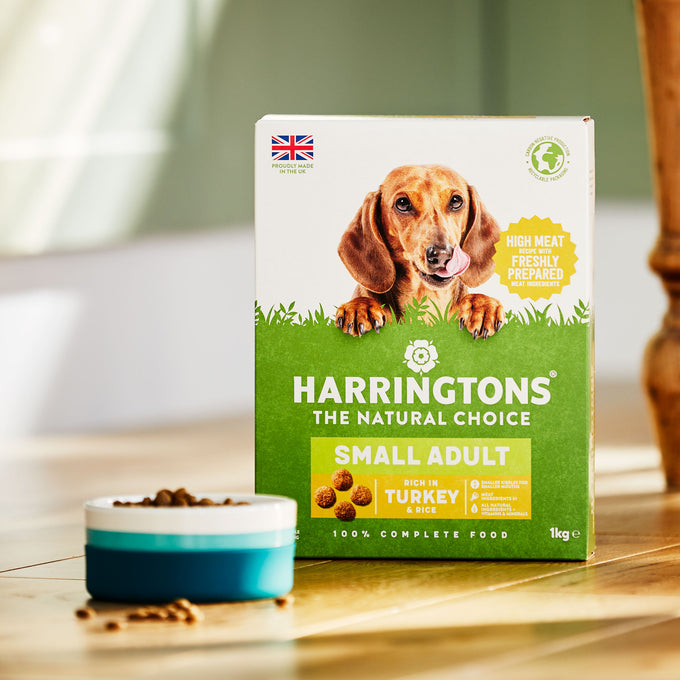Towns and cities are popular among young professionals, with close access to workplaces, entertainment and other amenities helping them live life to the fullest. Canines are common companions, too. You may own a four-legged friend - or find that you needn’t stroll too far before finding one!
Dangers to dogs in the great outdoors vary by city and country. A little-known fact is that pups (and their owners) are exposed to a host of allergens unique to urban spaces every day.
Being aware of visible and invisible risks can help to keep noses shining and tails wagging, without breaking the bank on expensive vet visits. So, our experts have revealed prevalent city allergies, the symptoms, and how to help your pup if you’re worried they’re struggling.
Five urban allergies affecting dogs:
Air pollution
It’s no secret that urban spaces are hotbeds for air pollution - and this can spark an allergy in a dog. Cities have a higher density of traffic than other areas, and with roads packed in between high-rise buildings with little fresh air flow in the surrounding environment, it can be harder for harmful emissions to escape into the wider atmosphere.
This problem isn’t limited to above ground. The London Underground also has poor air quality, with pollution at its highest during evening rush hour. Dogs can have an allergic reaction to these particle emissions, but sustained exposure to air pollution can also contribute to more serious health problems like brain inflammation, difficulty breathing, and fertility, liver and immunity issues.
Pollen
Surprisingly, pollen can create more severe allergic reactions in the city than in the country for both people and dogs. This is because poor air quality can make it harder for pollen to escape into the atmosphere, so the pollen count stays higher for longer.
A combination of many birch trees, a high density of both traffic and air pollutants makes London a difficult space for pollen allergy sufferers – human or hound. Birch pollen especially is highly allergenic and is a significant cause of asthma, hay fever, and rhinoconjuntivitis in people.
While humans inhale pollen, dogs absorb it into the skin which can trigger excessive scratching and hair loss, licking, and face rubbing on rough surfaces.
Passive smoke
Following the theme of airborne particles, a recent study showed that dogs in smoke-free homes have healthier lungs than those in smoke-prone homes. Passive cigarette smoke clings to fabrics, furniture and especially carpets, where city dogs spend most of their time. Studies show that dogs exposed to cigarette smoke sadly have an increased chance of developing nasal cancer.
Indoor pollutants – mould spores and dust mites
It’s not just environmental allergies that can affect dogs in the urban sprawl. Dogs living in city apartments with limited access to outdoor space are more vulnerable to indoor threats like dust mites and mould spores.
Over a fifth of UK homes have damp. Dogs can develop Canine Atopic Dermatitis (CAD) as an allergic reaction to mould spores while humans are at risk of respiratory infections and a weakened immune system.
Meanwhile, Dust mites are a common allergy for both people and dogs. Both can experience sneezing fits, but skin irritation and digestive problems can also occur in pups.
Discarded waste
Venturing outside on a dog walk goes a long way to reducing exposure to indoor allergens. Our guide to walking your dog in the city offers guidance on how far your dog can walk in the UK’s capital cities based on their breed, age, and lifestyle. Just be mindful about what your pup might snuffle up off the floor when you’re out and about!
Cigarette butts and broken or discarded vapes are a sinister surprise on a stroll or at your local dog-friendly hang-out. Nicotine poisoning is highly serious in dogs, causing anything from drooling and diarrhoea to fatal seizures so keep a close eye on your furry friend.
Our Senior Pet Nutritionist, Ashleigh Walker, said: “Watching out for discarded food is key to avoiding allergic reactions in dogs. Like us, some dogs do experience food allergies, so can benefit from a hypoallergenic diet with Superfoods. Their dietary needs also vary by age; puppies need dedicated puppy food to ensure they get the right nutrition to grow.
“Dogs can’t dine on the same tasty treats we can, but they’re still likely to pounce on the debris left behind by a late-night chip van, so it’s important to be vigilant so that unintended ‘street treats’ don’t upset their stomachs.”
How to identify an allergic reaction
If your dog has an allergic response to something then they’re likely to present with similar, but recognisable, symptoms:
- Itchy skin, ears and/or eyes
- Hives
- Swelling and inflammation
- Diarrhoea and / or vomiting
- Sneezing
- Excessive licking and scratching
If you’re unsure whether the symptoms are due to an allergy or another condition, like a cold or an eye infection, monitor your pooch and seek advice from your vet. When and where are their reactions more severe? Are their symptoms worse inside or outside? Or after eating? If you spot a pattern, remove potential stressors in sequence and check their symptoms in response to narrow down the cause. This information will be useful to help your vet determine the right response.
How to help a dog with allergies
It’s easy to feel a bit powerless when our fur babies are feeling under the weather. Rest assured that your vet will always know best. Encouragingly, as loving pet owners we can help them stay healthy. Dog walking training can teach them to recognise, and stay away from, dangers.
Ashleigh continues: “A quality diet can help balance a dog’s nutrition and keep them fighting fit against both food and seasonal allergies. We offer a range of 100% complete, nutritionally balanced dry dog food with added prebiotic FOS and vitamin E to help support good digestion and a healthy immune system.”
With a little awareness of urban dangers, and the right balance of nutrition in their diet, there’s no reason our dogs shouldn’t enjoy the buzz of city life as much as we do. After all, a dog is for life – not just the countryside!

